Wheat flour is one of the most important ingredients in baking and popular recipes, but it can wreak havoc on your gut if you’re gluten-intolerant.
As a result, many people who have gluten sensitivities choose to eliminate it from their diet and miss out on their favorite recipes.
But, not anymore! If you’re looking for a substitute that is both healthy and delicious, these 15 wheat flour substitutes are your best bet!
Table of Contents
15 Best Wheat Flour Substitutes
The best substitutes for wheat flour are coconut flour and almond flour. You can also use rice flour, buckwheat flour, and amaranth flour as wheat flour alternative in most recipes.
If you are out of wheat flour, you can use any of these in most recipes that call for wheat flour.
1. Coconut Flour
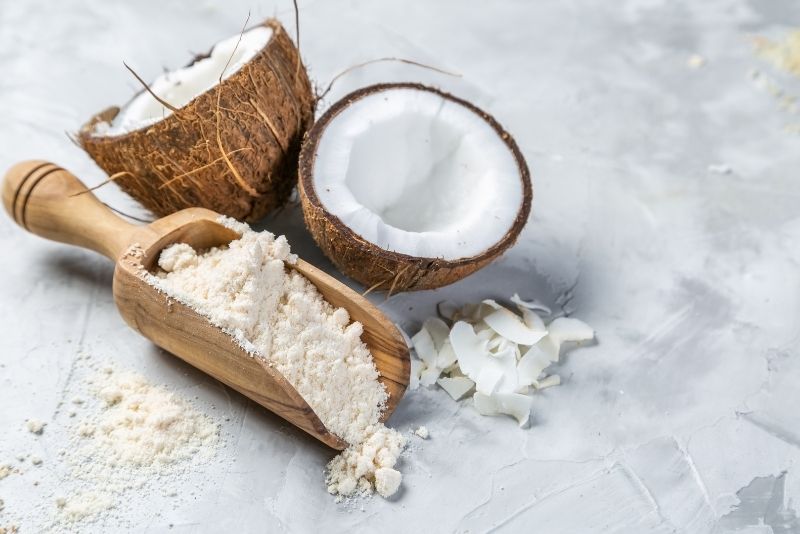
Coconut flour is a low-carb, gluten-free alternative to wheat that’s high in fiber and protein. It helps to thicken recipes without adding any extra fat or calories. It also imparts a rich flavor into baked goods, making it ideal for cakes, cookies, and bread alike.
Coconut flour is made from ground coconut meat, making it a good alternative to wheat flour for vegans and vegetarians.
However, it may be difficult to work with initially because, unlike other gluten-free flours, coconut flour absorbs a lot of liquid. It’s also very expensive in comparison to many other gluten-free ingredients.
2. Almond Flour
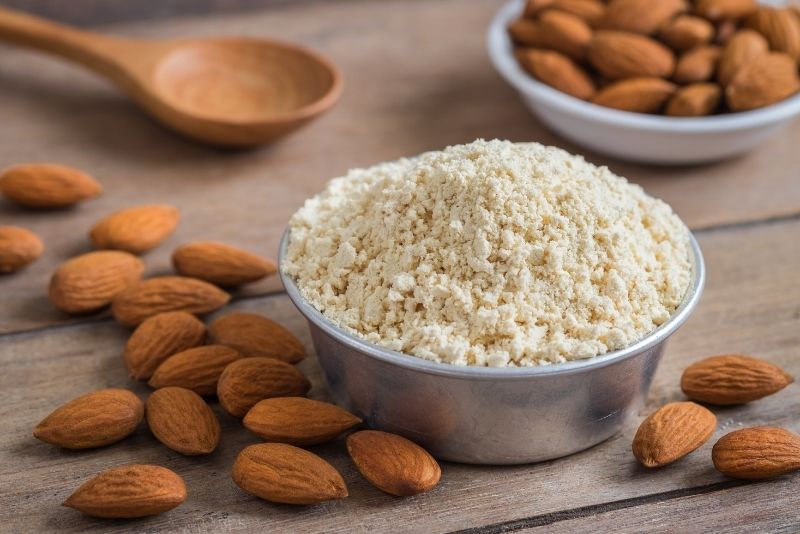
Almond flour is a wonderful wheat flour alternative, and it’s great for anyone with nut allergies or sensitivities.
If you have trouble digesting wheat, almond flour will make your baked goods even healthier! It’s also rich in vitamins and minerals, as well as protein.
Almond flour helps to give doughs a tender texture that you can’t get from other flours. It absorbs liquids well, and produces a light, crispy baked good that’s sure to delish!
Be mindful, though; almond flour is quite expensive!
3. Rice Flour
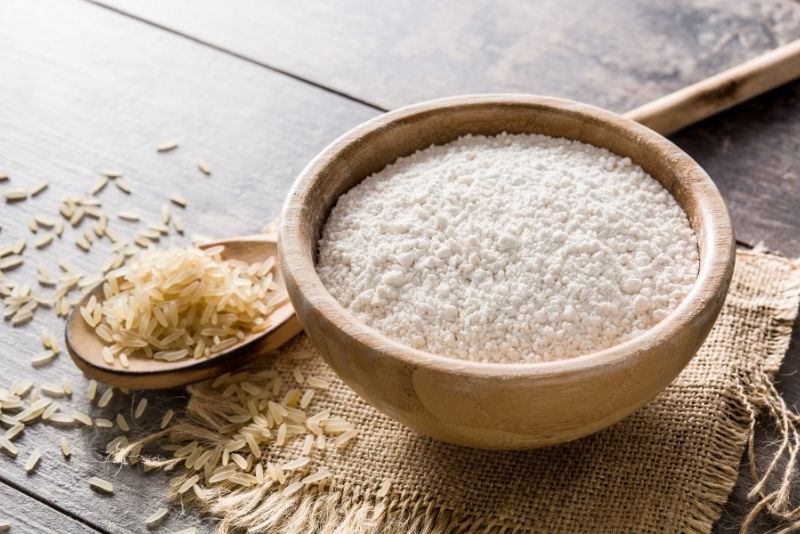
Though rice isn’t categorized as a grain, it does serve the same purposes in baking as wheat flour.
It’s a low-fat, gluten-free alternative that is easy to digest and has virtually no carbohydrates. This makes rice flour an ideal ingredient for anyone with the same dietary restrictions mentioned above.
Best of all, it’s not expensive at all! It can also be easily found in the baking section of most grocery stores.
4. Amaranth Flour
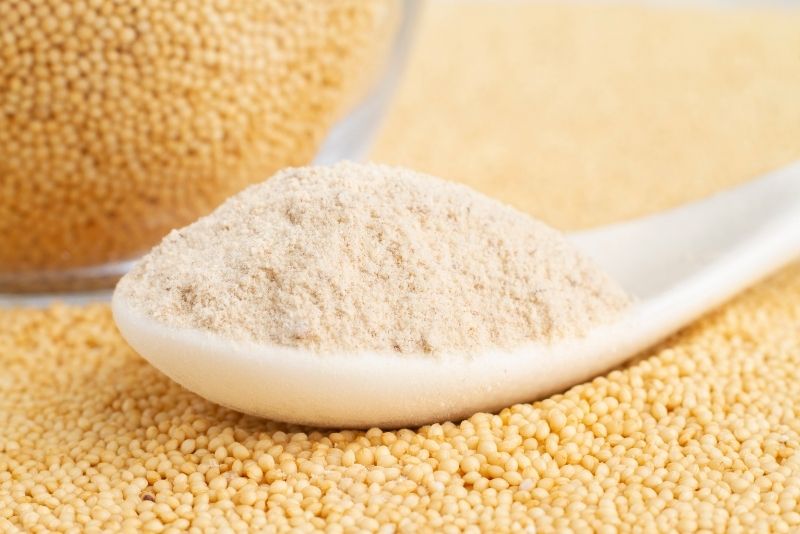
Amaranth flour is a great grain replacement for those with wheat sensitivities. As an added bonus, it’s also high in protein and calcium!
It combines well with other flours as well, so you’ll be able to create virtually any baked good you like.
To prepare a wheat flour substitute, mix one part of Amaranth flour with around 3 or 4 parts of other grain flours.
Amaranth flour can also be used to prepare other dishes, such as pancakes, muffins, and pizza crust.
5. Buckwheat Flour
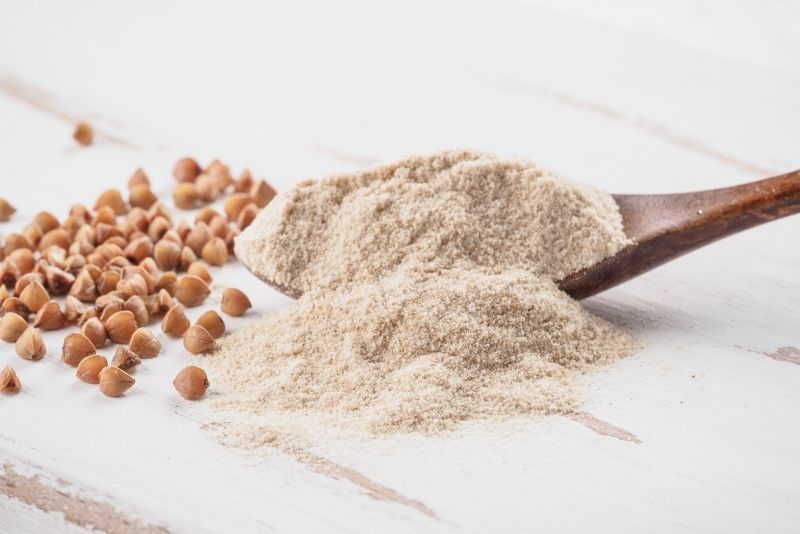
Buckwheat flour is a hearty alternative to wheat flour that’s naturally gluten-free!
It has a deep flavor that can’t be replicated by any other substitute ingredient, making it popular in the production of healthy bread and crepes.
Buckwheat flour is also high in protein and is a good source of fiber, making it an excellent ingredient for anyone with wheat sensitivities.
However, those who are allergic to grain should steer clear because buckwheat is related to sorrel herb and rhubarb!
6. Quinoa Flour
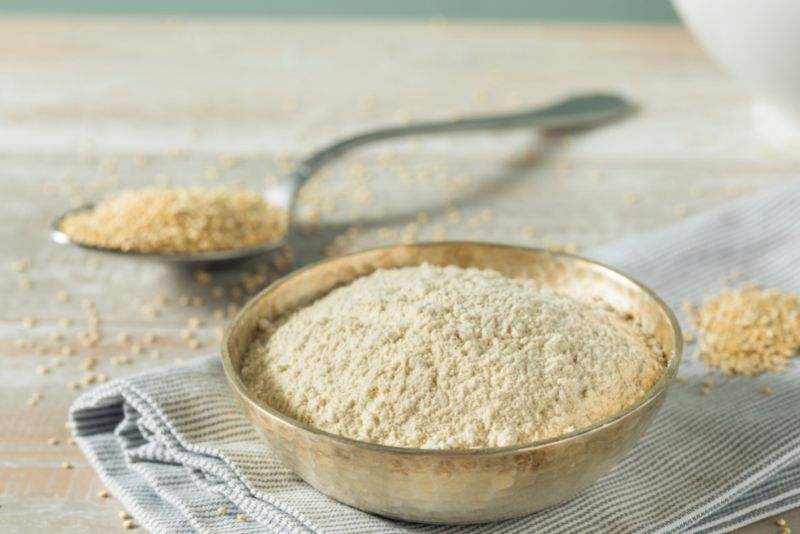
Quinoa flour is another grain replacement that’s high in protein, calcium, and vitamin B. As a result, it’s a terrific ingredient for those who are looking to up their nutritional intake!
It works well as a wheat flour substitute because of its mild flavor and ability to absorb liquids without compromising the texture or taste of baked goods.
It also makes baked goods moist without being heavy or dense.
To prepare a wheat flour substitute, mix one part of quinoa flour with around 3 or 4 parts of other grain flour. You’ll get the texture you require without sacrificing taste!
Be sure to store your quinoa flour in an airtight container, though. Otherwise, it will turn rancid quickly!
7. Potato Flour
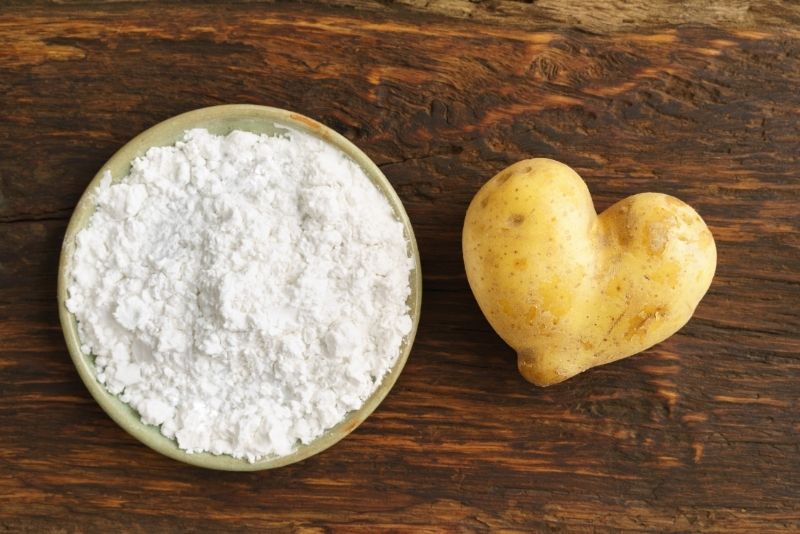
Though potato flour doesn’t have a significant nutritional value, it is gluten-free and vegan-friendly. If you’re looking for something easy to work with that won’t cost an arm and a leg, potato flour will be your best bet!
It’s best to use potato flour in conjunction with other gluten-free flour. When mixed well, you’ll get the texture of wheat flour without compromising flavor or taste!
8. Tapioca Flour
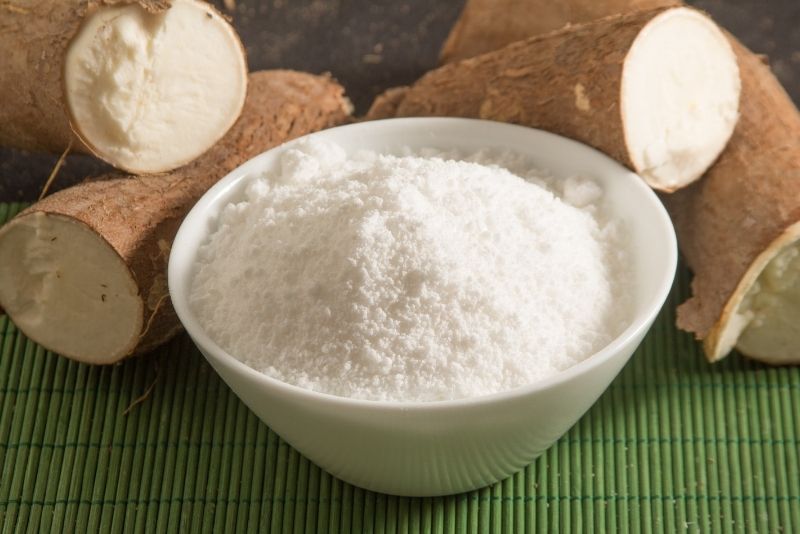
Tapioca flour is commonly used as a thickening agent in cooking and baking. It’s also high in protein, making it a strong wheat flour substitute.
Many people find tapioca flour to be easy to work with because it can absorb liquids and fats without changing the taste or texture of baked goods.
If you’re looking for an alternative that will help increase your overall health, consider giving tapioca flour a shot!
9. Brown Rice Flour
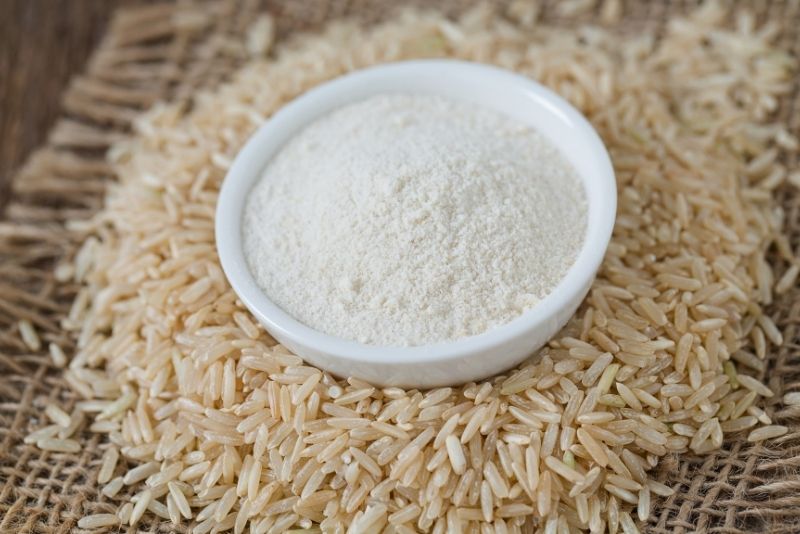
Another great grain replacement, brown rice flour is both inexpensive and easy to find. It’s also high in vitamin B, making it an ideal ingredient for anyone looking to add more nutrients to their diet!
You’ll get a rich texture that’s perfect for creating all sorts of baked goods. It works well with nuts like pecans and almonds, as well as natural nut oils and extracts.
Be sure to store your brown rice flour in an airtight container, however! It will turn rancid if it’s left out on the counter.
10. Rye Flour (with Gluten)
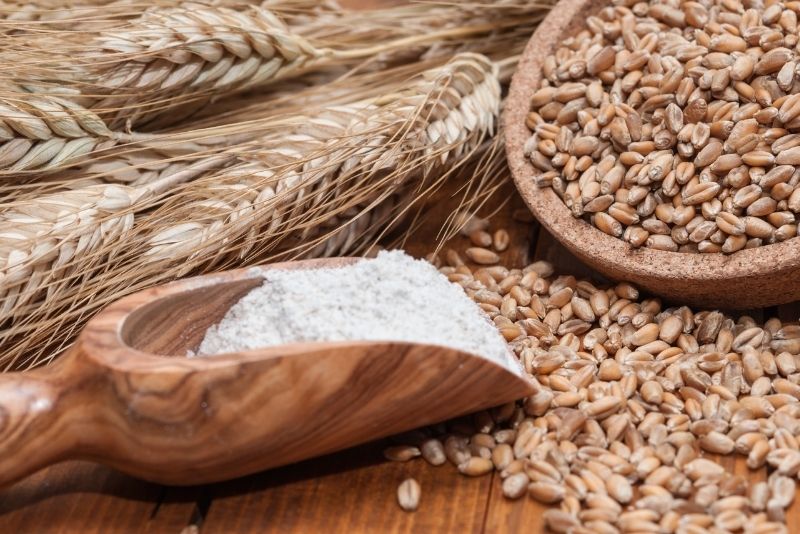
Rye flour is another great wheat flour substitute that can be found in most grocery stores. Not only is it a healthy alternative, but it’s also rich and nutty – perfect for enhancing the texture of all your favorite baked goods!
It works particularly well when combined with other ingredients like cornmeal, buckwheat flour, or quinoa.
If you’re looking for a wheat flour substitute that’s easy to work with, delicious, and nutritious, give rye flour a try!
11. Oat Flour
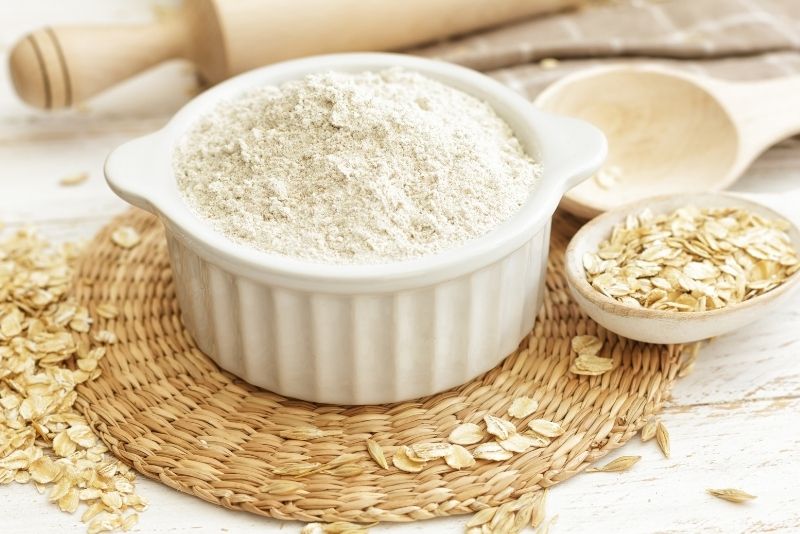
Another favorite of bakers, oat flour is an excellent wheat flour substitute that’s high in fiber and protein. Mixing oat flour with other ingredients, such as wheat germ, will create baked goods that are rich and filling!
It works very well in recipes like pancakes, muffins, and cookies.
Because oat flour is high in fiber, it’s important not to overuse it when baking. Otherwise, your baked goods will end up dense and hard!
12. Teff Flour
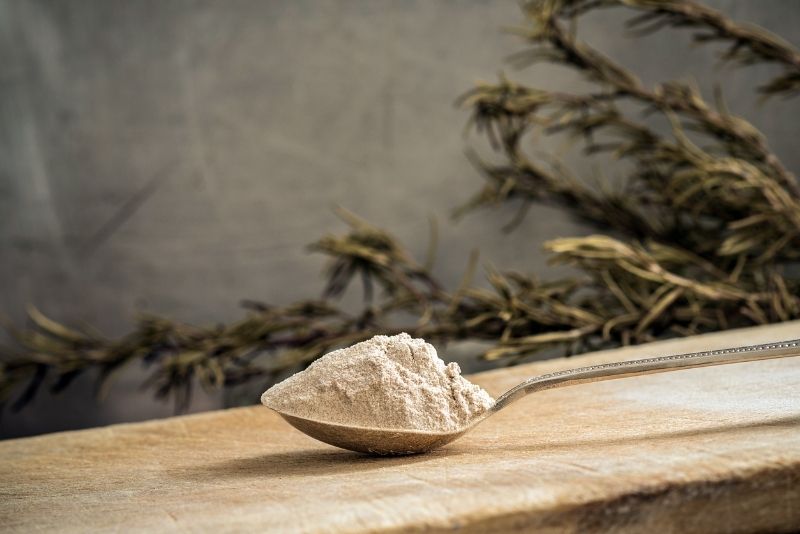
Teff flour is a popular replacement for wheat flour that’s rich in iron and calcium. If you’re looking to use foods as medicine, teff flour will fit your needs perfectly!
It works well with other ingredients like rice, millet, sesame seeds, or buckwheat. It also blends well with fruits and nuts – perfect for creating your own flours!
You can use teff flour to prepare baked goods like cakes and cookies. It’s also a good ingredient for thickening sauces!
Be sure to keep your teff flour in an airtight container, however. Otherwise, it will quickly turn rancid – especially if you’re grinding your own flour.
13. Millet Flour
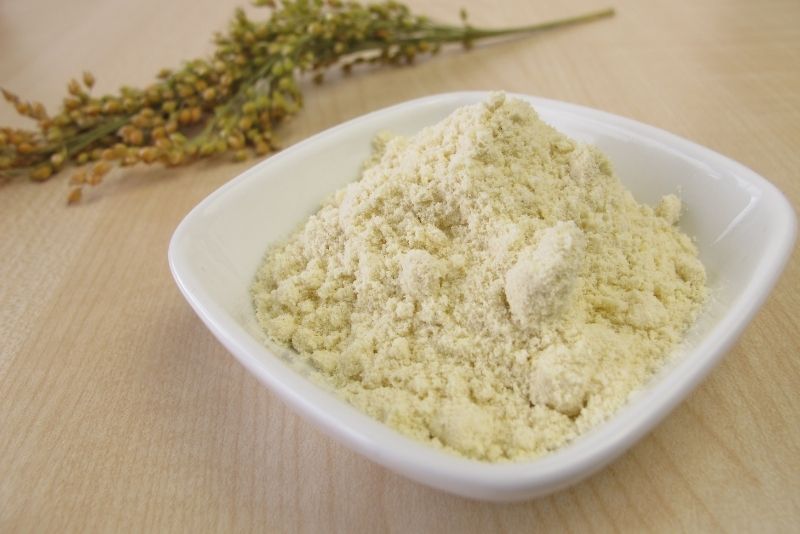
As one of the oldest grains known to humankind, millet flour is rich in antioxidant vitamins as well as fiber. It has the texture of wheat flour and works well in most baked goods.
Millet flour is excellent for people with celiac disease, anemia, or diabetes. Because it’s rich in iron, it can also help you avoid anemia and fatigue!
Because millet flour is high in fiber, you’ll need to use it with other gluten-free flours. It works especially well when combined with fruits, nuts, and grains.
Millet flour is best used to create baked goods like biscuits or cookies. It’s also great for thickening soups!
14. Corn Flour
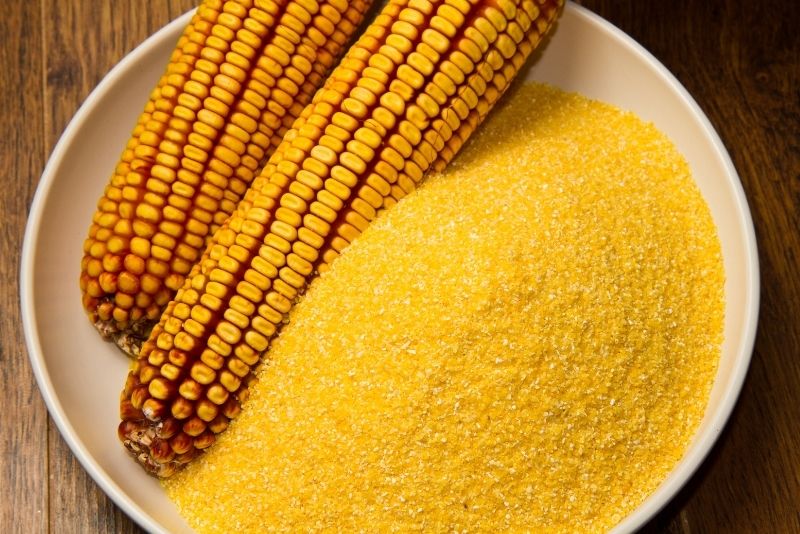
Another excellent wheat flour substitute for those of you who are watching your weight, cornflour is high in fiber and low in fat. It’s also rich in protein and B vitamins!
Corn flour works well with other gluten-free grains like brown rice or quinoa. Also try mixing it with eggs for lots of added flavor, nutrients, and texture!
Corn flour is best used in baked goods like biscuits or muffins. If you’re looking to use it for baking a cake, however, consider using cake flour instead.
15. Arrowroot Flour
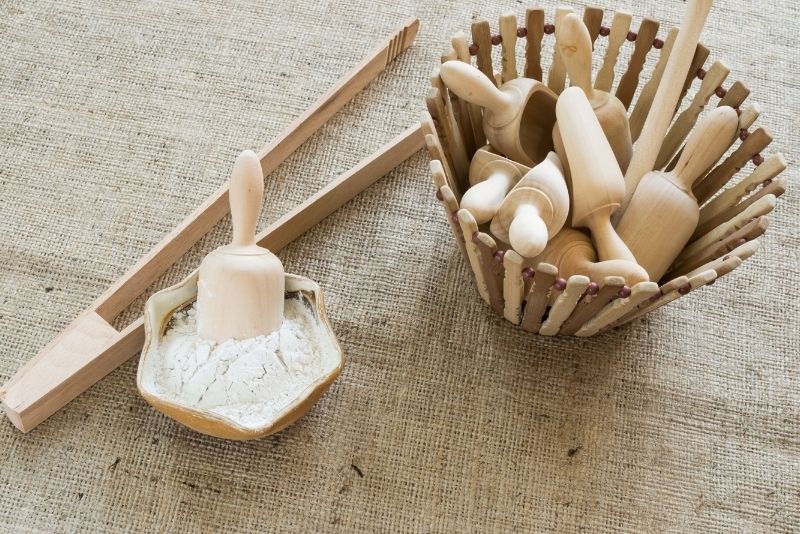
Arrowroot flour is a popular wheat flour substitute that’s rich in protein, fiber, and antioxidants.
You can buy it pre-made or make your own at home by mixing white rice – a process that takes very little hands-on time and can be done for cheap!
Arrowroot flour works great with other gluten-free flour replacements like quinoa and teff. It’s also a good substitute for corn flour, which is higher in fat and calories!
Be sure to mix your arrowroot flour with other ingredients while you’re baking. Otherwise, the baked goods will be flat and rubbery. Mixing it with things like eggs or applesauce can help add texture and moisture.
What is Wheat Flour?
Wheat flour is a type of cereal grain that is made from wheat grains. It contains gluten and is primarily used as a main ingredient in baked goods, found in everything from cookies to biscuits.
Freshly milled wheat looks like this:
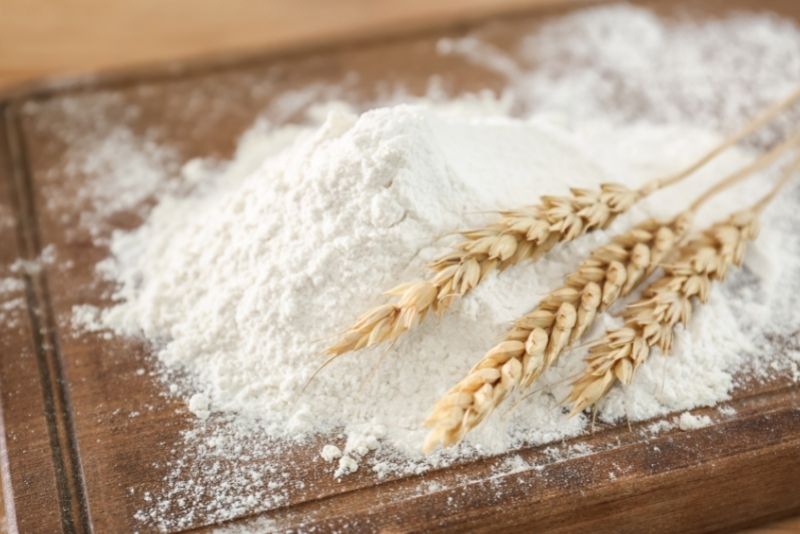
Frequently Asked Questions
What does wheat flour taste like?
Wheat flour has an earthy and nutty flavor. Some might say it tastes like slightly sweet. Whole wheat flour has a more robust flavor and can be used in both sweet and savory recipes. Overall, the taste of wheat flour is unique and hard to pinpoint.
However, many people enjoy the taste of wheat flour in baked goods and other recipes.
What is wheat flour used for?
Wheat flour is most commonly used in baking, as it gives baked goods a light and airy texture. It can also be used to make pasta, noodles, bread, pastries, and other items. Whole wheat flour has a more robust flavor and can be used in sweet and savory recipes.
However, there are ways to incorporate wheat into other recipes. For example, using whole-wheat flour can add fiber as well as a nutty, earthy flavor to soups, stews, and casseroles.
You can also use wheat flour in all-purpose recipes. Although it won’t make a huge difference in the way your dish tastes, you’ll be getting extra fiber!
What are the benefits of wheat flour?
Wheat flour has provided many people with important nutrients over the years. It’s one of the best sources of fiber that you can find.
In addition to being good for your digestive system, fiber has also been shown to lower cholesterol and control blood sugar levels. This means it can help reduce your risk of developing conditions like Type 2 diabetes.
What are the types of wheat flour?
The different types of wheat flour include white wheat flour, wheat berries, and pumpernickel flour. If you’re trying to bake with it, choosing the right type can make a big difference!
Here are some examples:
White Wheat Flour: White flour is made from grinding finely milled whole-wheat kernels. It is lighter in color but also lighter in taste and nutritional value compared with darker varieties.
Wheat Berries: Wheat berries are basically whole-wheat kernels that haven’t been ground into flour yet. They’re brown in color, making them perfect for adding a deep nutty flavor to meals!
Pumpernickel Flour: Pumpernickel is made from coarsely ground rye and wheat flours. It has a dark, slightly bitter taste.
Can you substitute regular flour for wheat flour?
Yes! In fact, you can use regular flour in all the same ways that wheat flour is used.
For example, you can make pancakes, cookies, and bread! You can even use it in most recipes that call for all-purpose flour.
Is wheat flour the same as white flour?
No, wheat flour and white flour are not the same.
White flour is made from wheat kernels that have been finely milled until they are almost pure starch. This makes it much lighter in color and nutrition compared with wheat flour.
Wheat flour has naturally all the fiber found in wheat whereas, in White flour, the fibers are removed during processing. However, there’s no calorie difference between the two.
Final Words
There you have 15 healthy and nutritious alternatives to traditional wheat flour.
Wheat is an important part of many people’s diets, so it can be difficult to avoid it completely.
For example, there’s no easy way to replace wheat flour in baked goods like pancakes and bread! If you do want to avoid it, there are plenty of recipes that can help with that.
However, if you’re willing to experiment a bit, it’s possible to maintain a wheat-free diet with the little inconvenience of these amazing wheat flour substitutes.
What alternatives will you be trying?